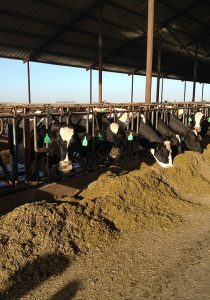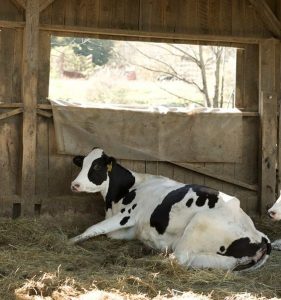Multi-species grazing, the practice of grazing different types of livestock together on the same pasture, is gaining popularity among farmers looking to maximize land use efficiency and improve pasture health.
Pros of Multi-Species Grazing
1. Enhanced Pasture Utilization
One of the significant advantages of multi-species grazing is improved pasture utilization. Different species have varying grazing behaviors and dietary preferences. For instance, cows prefer grasses, while goats and sheep are more inclined to browse shrubs and forbs. This diversity in grazing patterns can lead to more uniform pasture use, reducing the risk of overgrazing in specific areas and promoting healthier, more diverse plant communities.

2. Weed and Pest Control
Multi-species grazing can help control weeds and pests naturally. Goats are particularly effective at managing brush and invasive weed species that cows typically avoid. This natural weed control reduces the need for chemical herbicides, promoting a more sustainable and environmentally friendly farming practice. Additionally, diverse grazing can disrupt pest life cycles, potentially reducing the prevalence of parasites and other pests that affect livestock.

3. Improved Soil Health
Grazing different species can enhance soil health through varied nutrient deposition and soil disturbance patterns. Different animals contribute differently to soil fertility, and their varying hoof actions can help aerate the soil and improve water infiltration. This can lead to increased soil organic matter and better nutrient cycling, supporting more robust plant growth and overall pasture productivity.

4. Economic Diversification
Integrating multiple livestock species can diversify farm income streams. By raising different animals, farmers can access various markets and reduce economic risk. For instance, if milk prices fall, income from meat or wool can help stabilize the farm’s financial situation. This diversification can make the farm more resilient to market fluctuations and other economic challenges.

5. Reduced Parasite Load
Rotational grazing with multiple species can help break parasite life cycles, reducing the overall parasite burden. Since parasites are often species-specific, grazing different animals on the same pasture can interrupt their development stages. For example, sheep and goats can graze areas previously occupied by cows, reducing the risk of parasite transmission and promoting healthier livestock.
By the way you should Note that our company can help you to start by giving you all the necessary information you need to get started if not yet in the business. Please check our online shop, we have all the standard business proposals for different capacities at very a cheap price made by the best agricultural specialists as well as Standard design plans that are made by the best agricultural architects around the globe. please visit our online shop now using the links below to witness by yourself
Design plans (FARM HOUSE DESIGNS – Kimd Construction & Farm Consultants)
Business plans (BUSINESS PLANS & PROPOSALS – Kimd Construction & Farm Consultants)
Welcome back from visiting our shop, hope you have placed your order for any of our products or you can place it after navigating more of our informative articles.
So let’s continue with our article! In this blog article!
Cons of Multi-Species Grazing
1. Complex Management Requirements
Managing a multi-species grazing system requires more planning and oversight than single-species grazing. Farmers need to understand the dietary needs, grazing behaviors, and health requirements of each species. Coordinating grazing schedules, ensuring adequate fencing, and managing potential interspecies competition can be challenging and time-consuming. This complexity can be a barrier for farmers who are new to livestock management or have limited resources.

2. Increased Infrastructure Costs
Multi-species grazing often necessitates additional infrastructure, such as specialized fencing and water systems, to accommodate different animals. For example, goats and sheep may require more secure fencing to prevent escape compared to cows. These additional infrastructure costs can be significant, especially for smaller farms with limited budgets. Proper planning and investment are essential to ensure the system’s effectiveness and longevity.

3. Health and Disease Management
Managing the health and disease risks of multiple species grazing together can be challenging. Different animals have different susceptibilities to diseases and parasites, which can complicate treatment and prevention efforts. Farmers must stay vigilant about monitoring the health of all species and implementing appropriate biosecurity measures to prevent disease outbreaks. Regular veterinary checks and a well-planned health management program are crucial for maintaining herd and flock health.

4. Potential for Interspecies Competition
While multi-species grazing can promote complementary grazing behaviors, there is also the potential for interspecies competition for resources. Dominant species may monopolize water sources, shade, or prime grazing areas, leaving less dominant species at a disadvantage. Farmers need to carefully manage pasture allocation and resource distribution to ensure that all animals have access to the necessary resources. Strategic planning and observation are essential to minimize competition and ensure equitable resource use.

5. Market and Marketing Challenges
Diversifying livestock can introduce complexities in marketing and sales. Different animals require different marketing strategies and market channels, which can be time-consuming to develop and manage. Additionally, not all markets are equally accessible or profitable for all types of livestock. Farmers need to research and understand their local markets and develop effective marketing plans to capitalize on the benefits of multi-species grazing.

Conclusion
Multi-species grazing offers numerous benefits, including enhanced pasture utilization, natural weed and pest control, improved soil health, economic diversification, and reduced parasite loads. However, it also comes with challenges such as complex management requirements, increased infrastructure costs, health and disease management issues, potential for interspecies competition, and marketing complexities. Farmers considering multi-species grazing should weigh these pros and cons carefully and plan accordingly to maximize the benefits and minimize the challenges of this innovative grazing approach. With proper planning and management, multi-species grazing can be a sustainable and profitable strategy for modern dairy farms.



